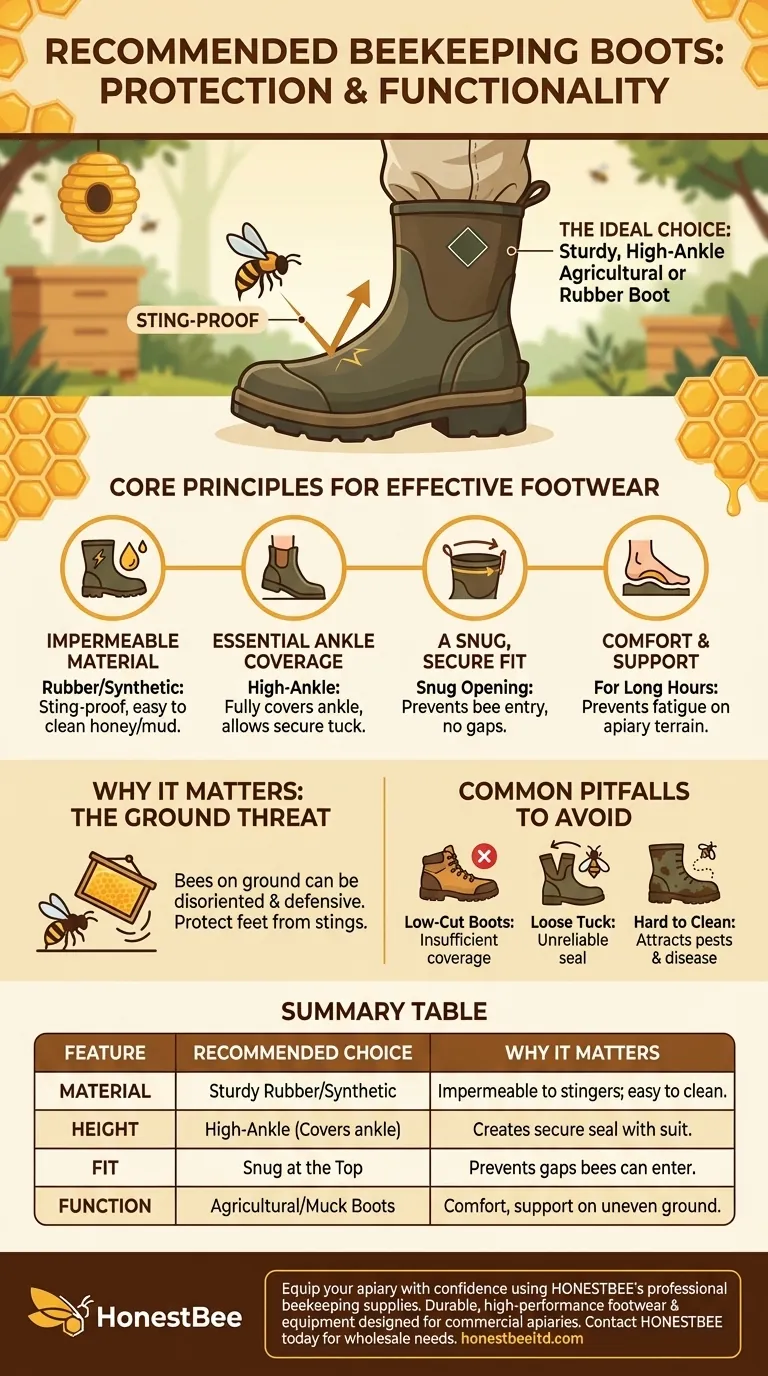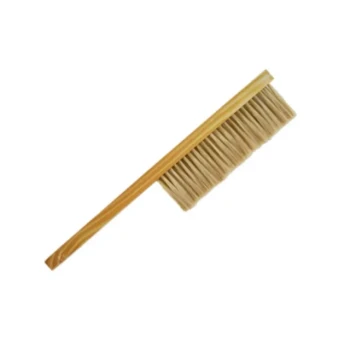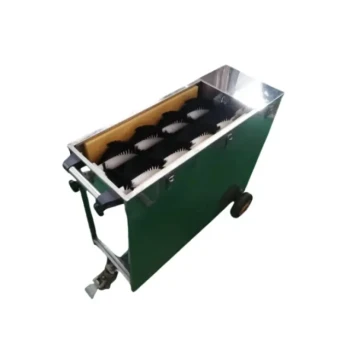For beekeeping, the most recommended footwear is a sturdy, high-ankled agricultural boot, often referred to as a "Muck boot" or a simple rubber boot. These boots provide a comfortable, sting-proof barrier that is easy to clean after a day in the apiary.
The specific brand of boot is far less important than its core function. Your goal is to find footwear that creates an impenetrable seal around your ankle, protecting you from stings and allowing you to work with confidence.

Why Your Choice of Footwear Matters
While bees are not naturally drawn to attacking feet, the apiary floor presents unique risks. A dropped frame buzzing with bees or a clumsy step can quickly put your feet and ankles in a vulnerable position.
The Ground-Level Threat
Bees that fall to the ground can become disoriented and defensive. Inadequate footwear, such as sandals or low-cut shoes, leaves your feet exposed and is highly discouraged.
Creating a Complete Seal
Your bee suit is only as effective as its weakest point. The junction between your pant leg and your footwear is a common entry point for determined bees. Proper boots are essential for closing this gap.
The Core Principles of a Good Beekeeping Boot
Instead of focusing on a single brand, evaluate potential boots against these fundamental requirements. A good beekeeping boot is defined by its function, not its label.
Impermeable Material
Your boots must be made from a sturdy material that a bee's stinger cannot penetrate. Rubber and similar synthetic compounds are ideal choices. They also have the significant benefit of being easy to wash off honey, wax, and mud.
Essential Ankle Coverage
The boot must be high enough to fully cover your ankles and allow your bee suit or pants to be securely tucked in or pulled over the top. This height is non-negotiable for ensuring a bee-proof seal.
A Snug, Secure Fit
While the boot should be comfortable, the top opening should be snug. A loose, gaping top is a critical failure point, as it provides an easy entrance for a curious or defensive bee.
Comfort and Support
Working in an apiary often involves standing for long periods and walking on uneven ground. A comfortable, supportive boot prevents fatigue and allows you to focus on the health of your hives.
Common Pitfalls to Avoid
Choosing the right boot also means understanding what to avoid. A simple mistake in footwear can lead to a painful and unnecessary experience.
The Illusion of Low-Cut "Boots"
Hiking boots or work boots that do not fully cover the ankle are not sufficient. Even with pants tucked in, the seal is often unreliable and can become dislodged as you move.
The Risk of a Loose Tuck
Simply tucking your pants into a wide-mouthed boot is not enough. You must ensure the pant leg is securely held in place, either by the snugness of the boot itself or by strapping it down.
Ignoring Cleanliness
Boots caked in honey, pollen, or propolis can attract pests and spread disease between hives. A boot that is difficult to clean is a liability in the long run.
Making the Right Choice for Your Apiary
Select your boots based on your specific needs for protection, practicality, and budget.
- If your primary focus is maximum protection and versatility: Choose a high-quality rubber agricultural boot (e.g., Muck or TIDEWE brands) that offers excellent support and a snug fit.
- If your primary focus is budget and functionality: Any standard rubber rain boot will work perfectly, provided it covers the ankle and is not loose at the top.
- If you are looking for specialized beekeeping gear: White beekeeper-specific boots are available, but their functional protection is identical to that of a good agricultural boot.
Ultimately, the right boot is the one that lets you focus on your bees, not on your feet.
Summary Table:
| Feature | Recommended Choice | Why It Matters |
|---|---|---|
| Material | Sturdy Rubber/Synthetic | Impermeable to bee stingers; easy to clean. |
| Height | High-Ankle (Covers ankle) | Creates a secure seal with bee suit to prevent stings. |
| Fit | Snug at the Top | Prevents gaps that bees can enter. |
| Function | Agricultural/Muck Boots | Provides comfort, support, and maximum protection on uneven ground. |
Equip your apiary with confidence using HONESTBEE's professional beekeeping supplies.
We understand that your focus should be on your bees, not on worrying about your gear. As a trusted wholesale supplier to commercial apiaries and equipment distributors, HONESTBEE provides durable, high-performance footwear and equipment designed for the rigors of professional beekeeping.
Let us help you enhance safety and efficiency in your operations.
Contact HONESTBEE today to discuss your wholesale supply needs and discover our full range of reliable beekeeping solutions.
Visual Guide

Related Products
- Cotton Beekeeping Suit and Round Hat with Veil Bee Keeper Protective Gear
- Professional Galvanized Hive Strap with Secure Locking Buckle for Beekeeping
- Professional Beekeeping Suit for Kids and Girls Childrens Bee Keeper Suit
- Beekeeping Gloves Goatskin Leather with Long Cotton Sleeve for Beekeepers
- High Performance Plastic Queen Excluder for Beekeeping and Apiary Management
People Also Ask
- What should be considered regarding the color of beekeeping clothing? Ensure Your Safety and Keep Bees Calm
- What factors should be considered when choosing a beekeeping suit? Balance Safety, Comfort & Performance
- How should a beekeeping suit be hung to maintain its shape? Protect Your Investment with Proper Storage
- Why is a jacket with a hat veil recommended for beekeepers? Essential Protection for Your Face and Neck
- Why is white the predominant color in bee suit designs? | Key to Hive Calm & Beekeeper Safety



















